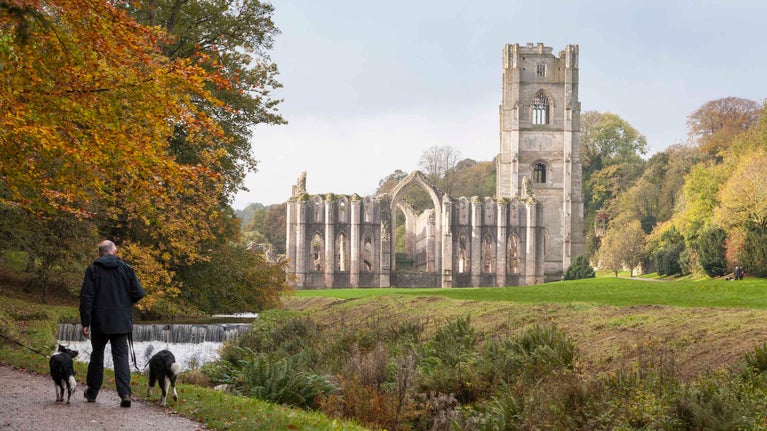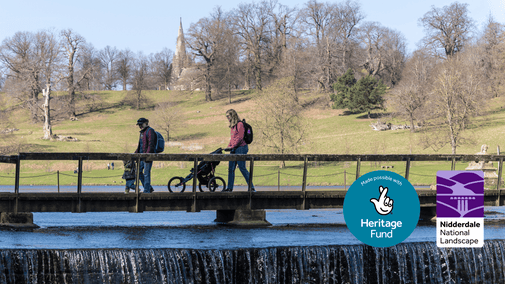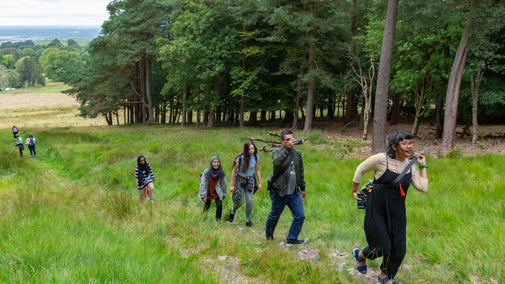A walk through the centuries at Fountains Abbey
Yorkshire
You'll experience time travel as you walk through the Fountains Abbey & Studley Royal Estate, exploring the abbey, water features and the formal and picturesque garden designs that mark significant stages in the estate's history over eight centuries from 1132 to 1987.
Start point
Fountains Abbey visitor centre, Fountains Lane, Fountains, Ripon, North Yorkshire HG4 3DY. Grid ref: SE272687.Your walking route
This is not a circular walk; to discover all the significant landscape additions you may need to double back on yourself a couple of times. The walk takes you around the grounds so you'll need to pay admission or be a National Trust or English Heritage member.
More near here
Studley Royal deer park walk
Follow this circular route trail to marvel at the 300 wild deer that live within the Studley Royal deer park in North Yorkshire.

The Seven Bridges Valley walk
On this circular walk, you'll cross delightful arched bridges as you follow the meandering Skell river.

Fountains Abbey ancient trees walk
Explore the highlights of the park on this circular walk and learn more about the ancient trees in the deer park and insights into the 18th-century landscape.

The Fountains Way
Walk to Fountains Abbey and Studley Royal from Ripon, taking in cathedral views from the lime avenue through the deer park, then explore the Seven Bridges Valley on your return.

Get in touch
Our partners

We’ve partnered with Cotswold Outdoor to help everyone make the most of their time outdoors in the places we care for.
You might also be interested in
Eating and shopping at Fountains Abbey
Break up your adventures at Fountains Abbey and Studley Royal with some tasty refreshments. Afterwards, look for the perfect gift or a treat for yourself in the National Trust shop and plant centre.

Walking in Ripon
Ripon is a wonderful place for walks, with its charming streets, riverside paths, and green open spaces. Whether you prefer a leisurely stroll or a longer, more scenic route, there’s plenty to enjoy. Discover a variety of walks in Ripon and the surrounding area.

Walking in Yorkshire
Discover some of the best walks in Yorkshire, from rugged Pennine beauty spots, views over the coast, to parkland and meadows perfect for a family stroll. Most are dog friendly and many can be enjoyed as part of your day out to the nearest National Trust property.

Walking
Explore some of the finest landscapes in our care on coastal paths, accessible trails, woodland walks and everything in between. Find the best places to walk near you.

Staying safe at National Trust places
The special places in National Trust care sometimes come with a few risks for visitors, be it coastline or countryside. Find out how to keep safe throughout your visits.

Follow the Countryside Code
Help to look after National Trust places by observing a few simple guidelines during your visit and following the Countryside Code.

Cotswold Outdoor: our exclusive walking partner
Learn about the National Trust’s ongoing partnership with Cotswold Outdoor. Find out how they help us care for precious places and the exclusive discount available for National Trust supporters.

